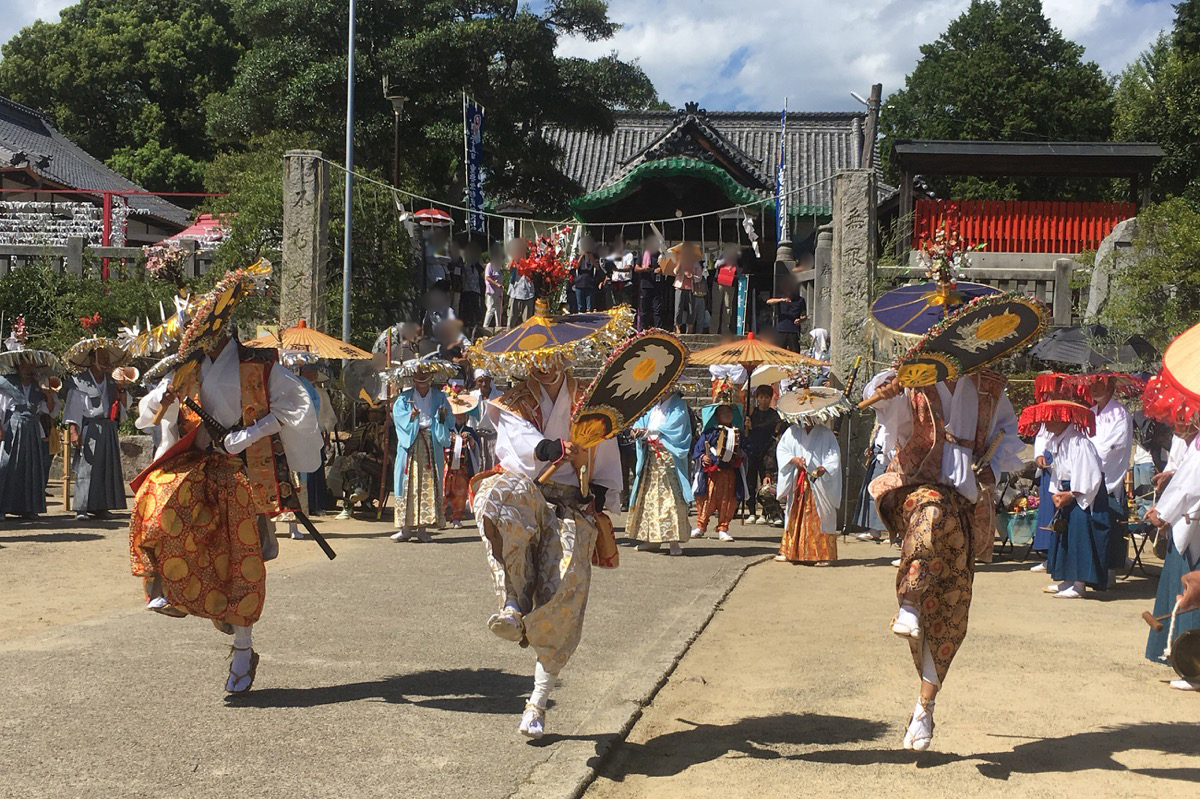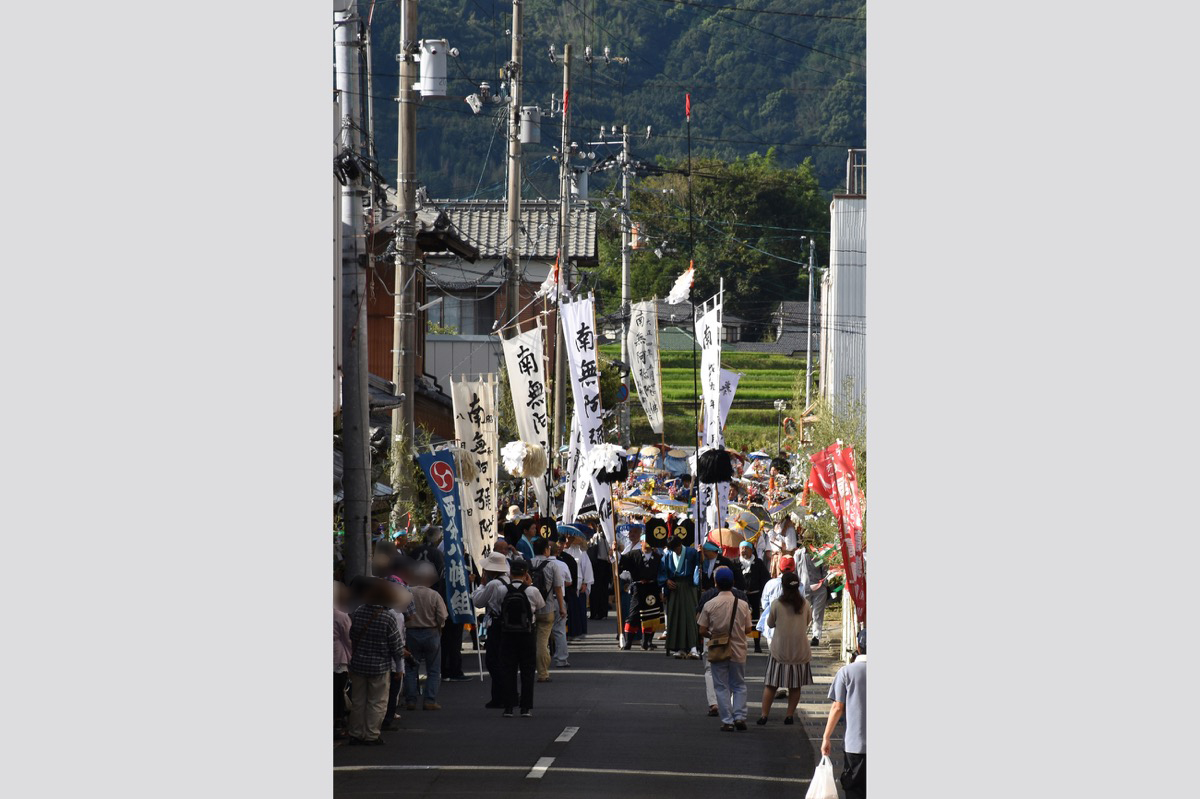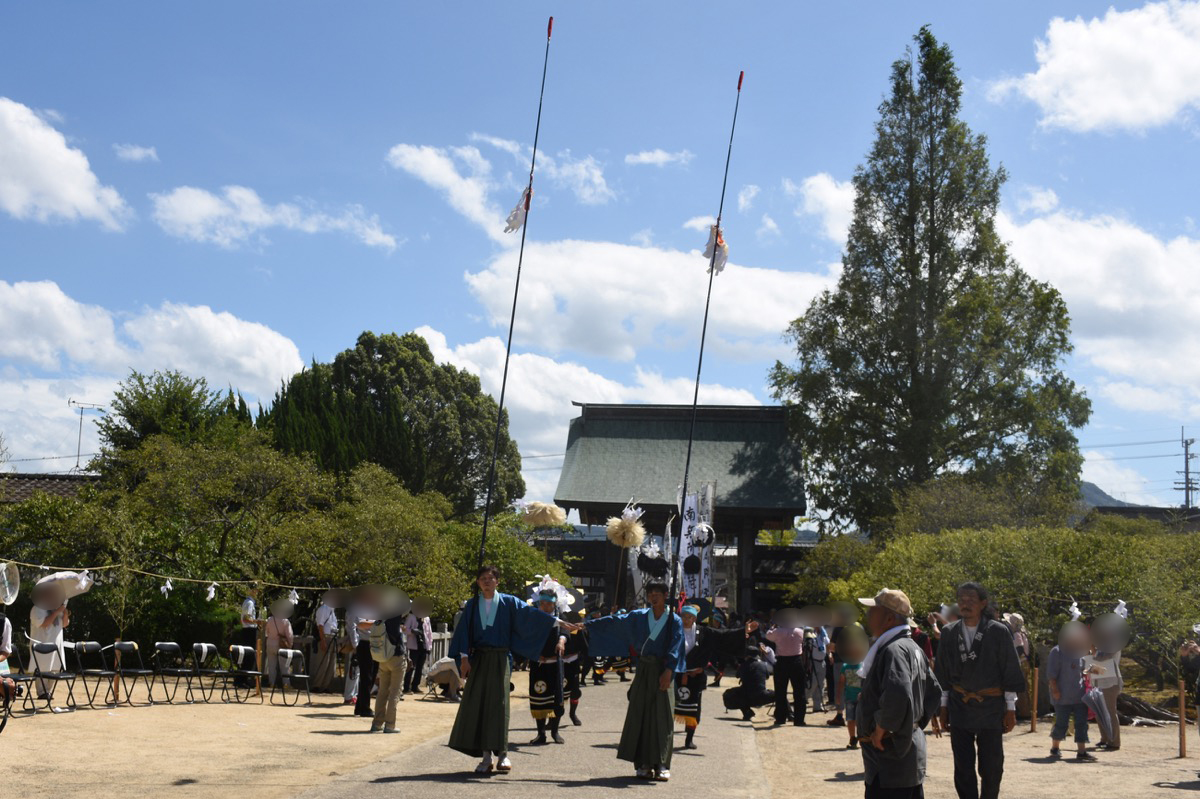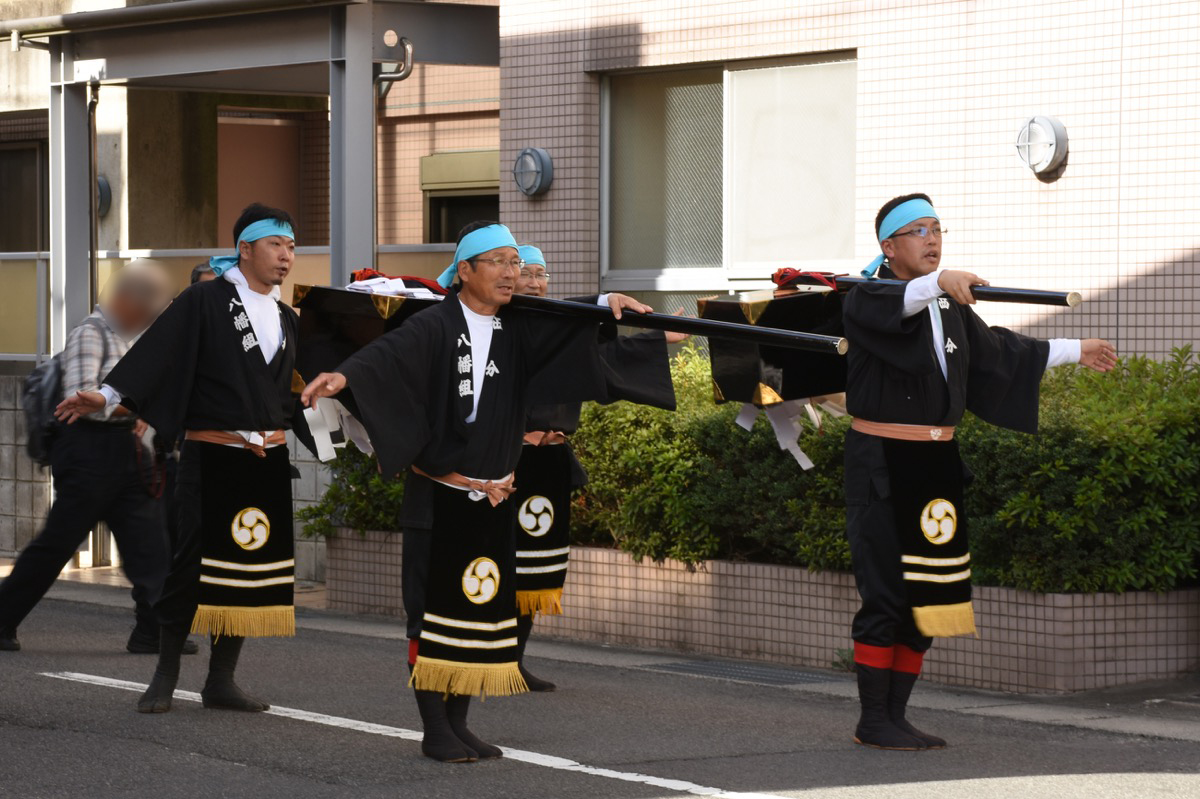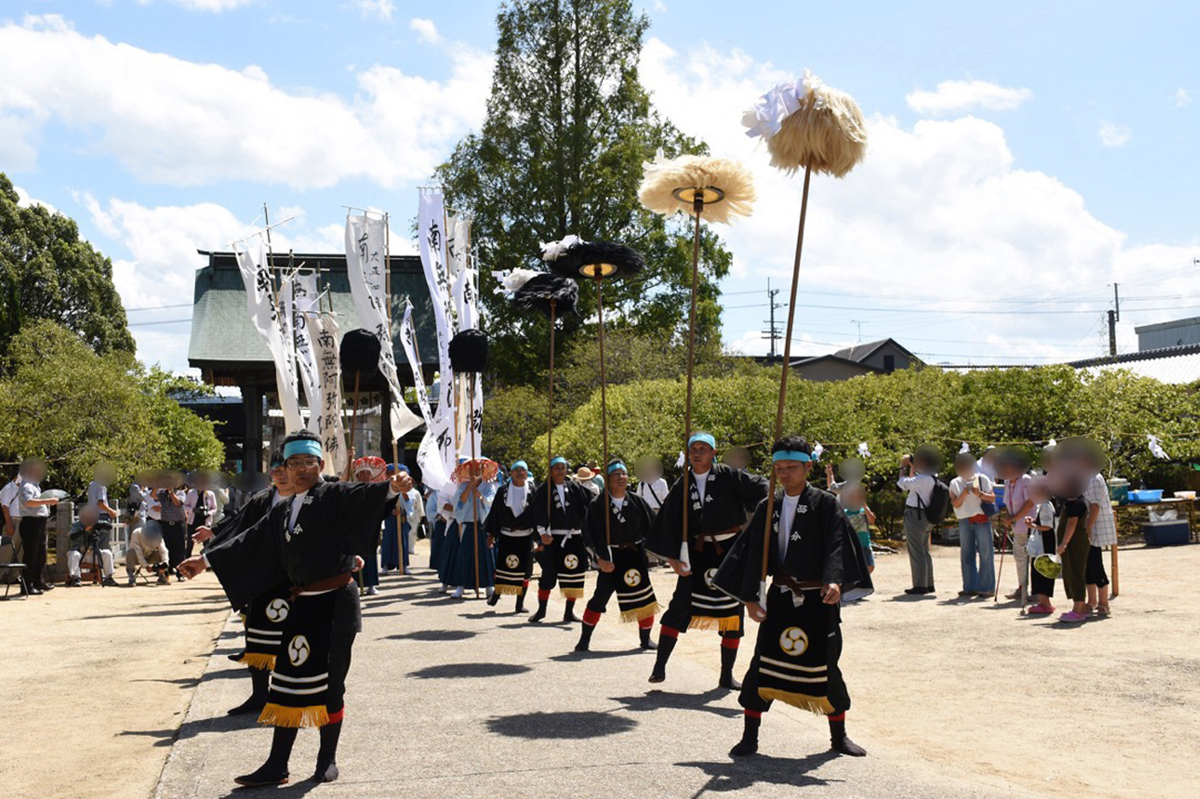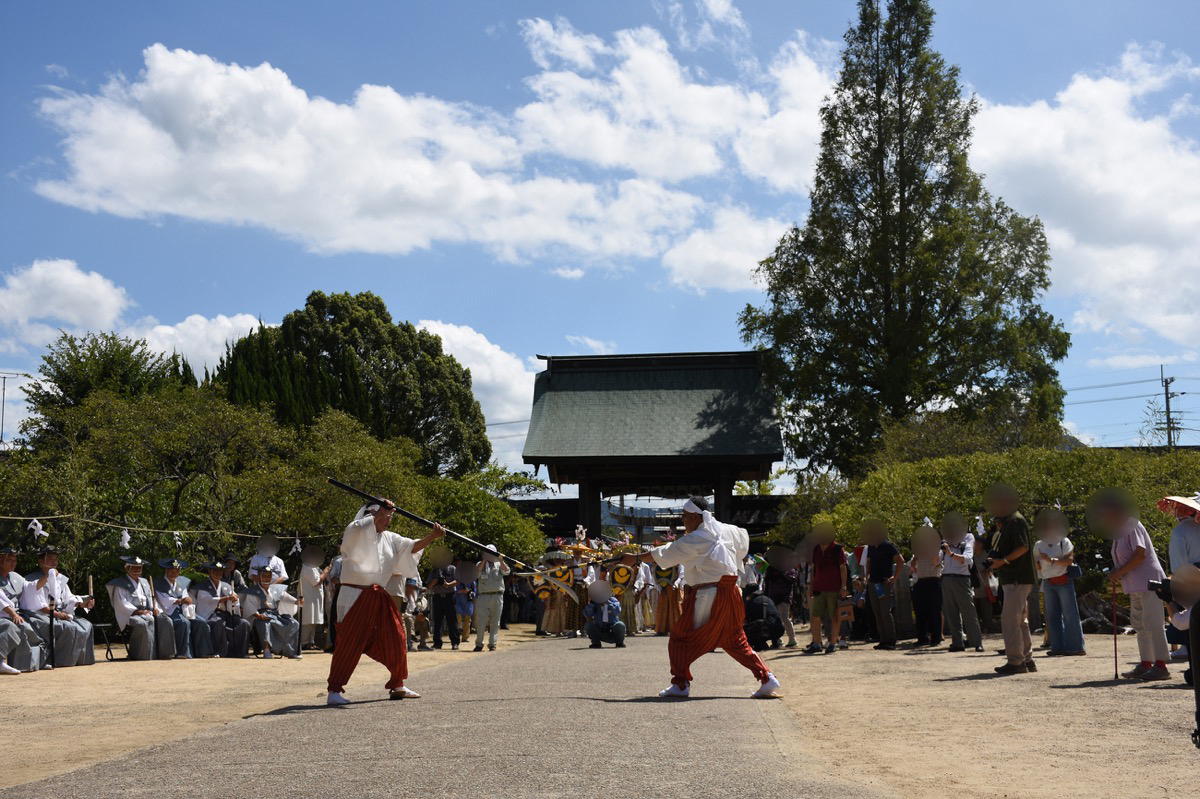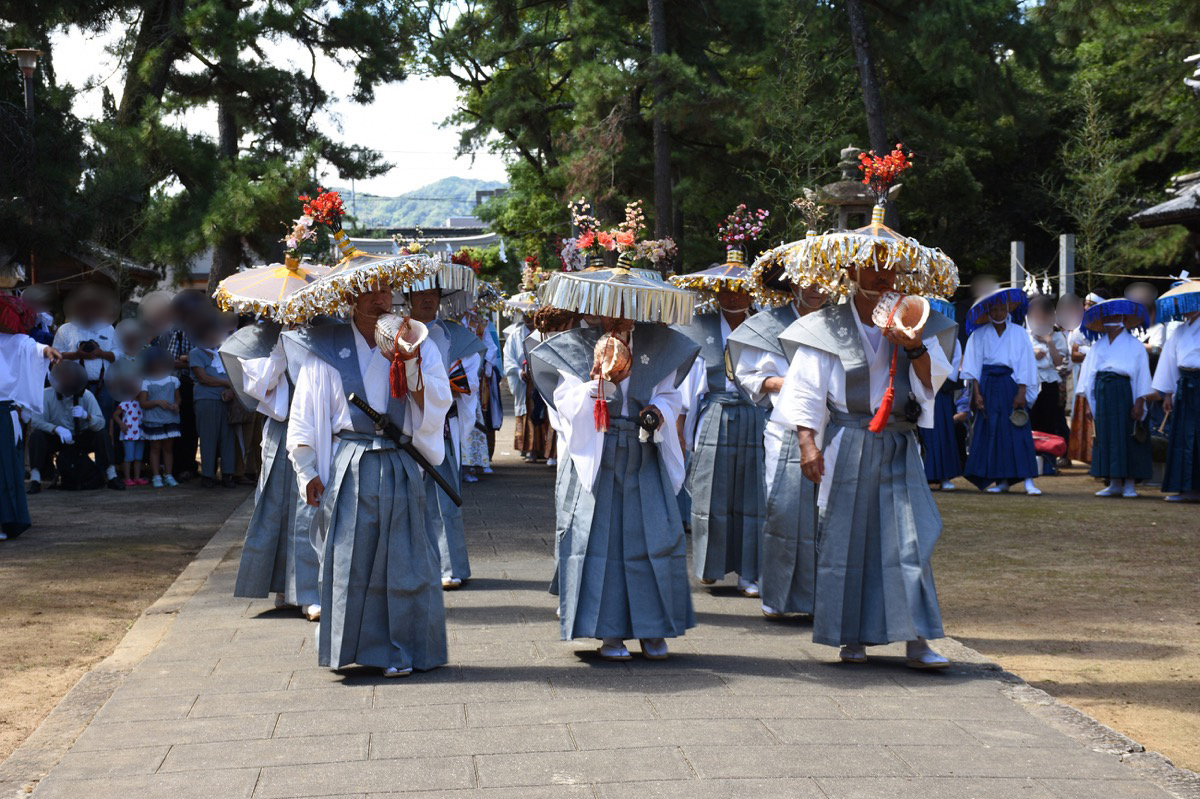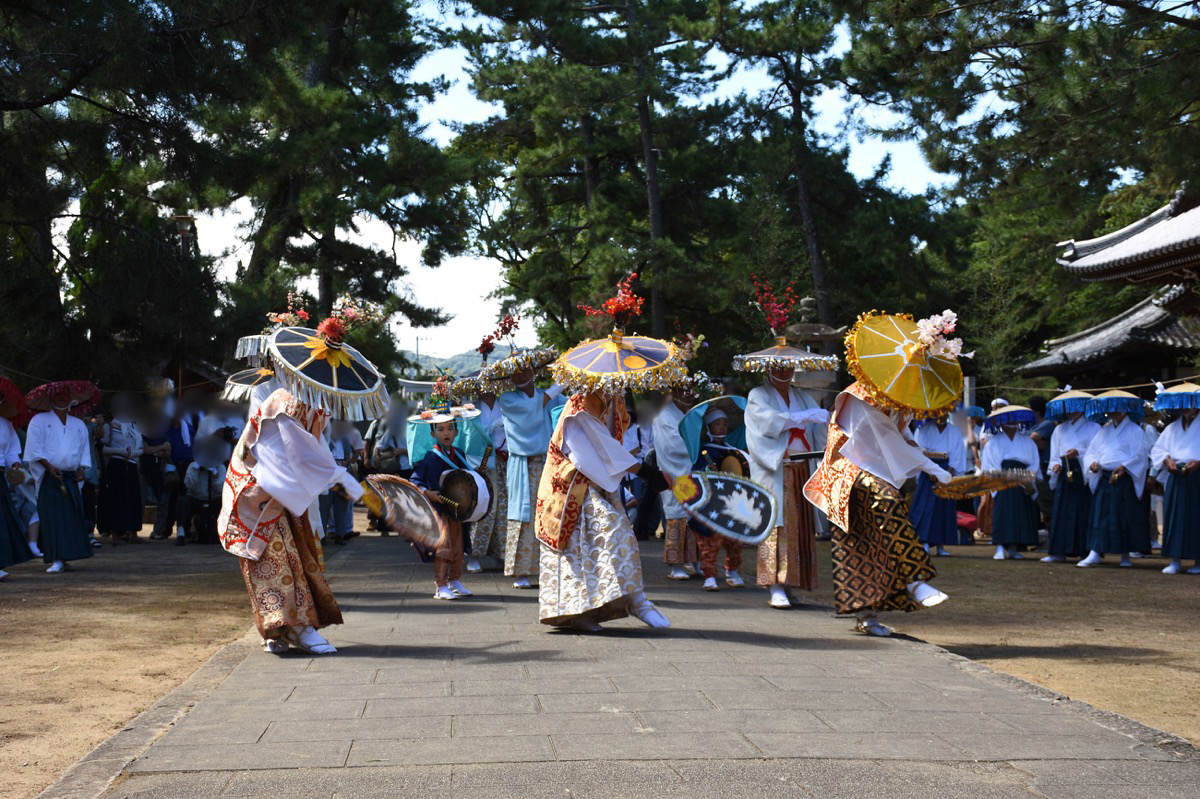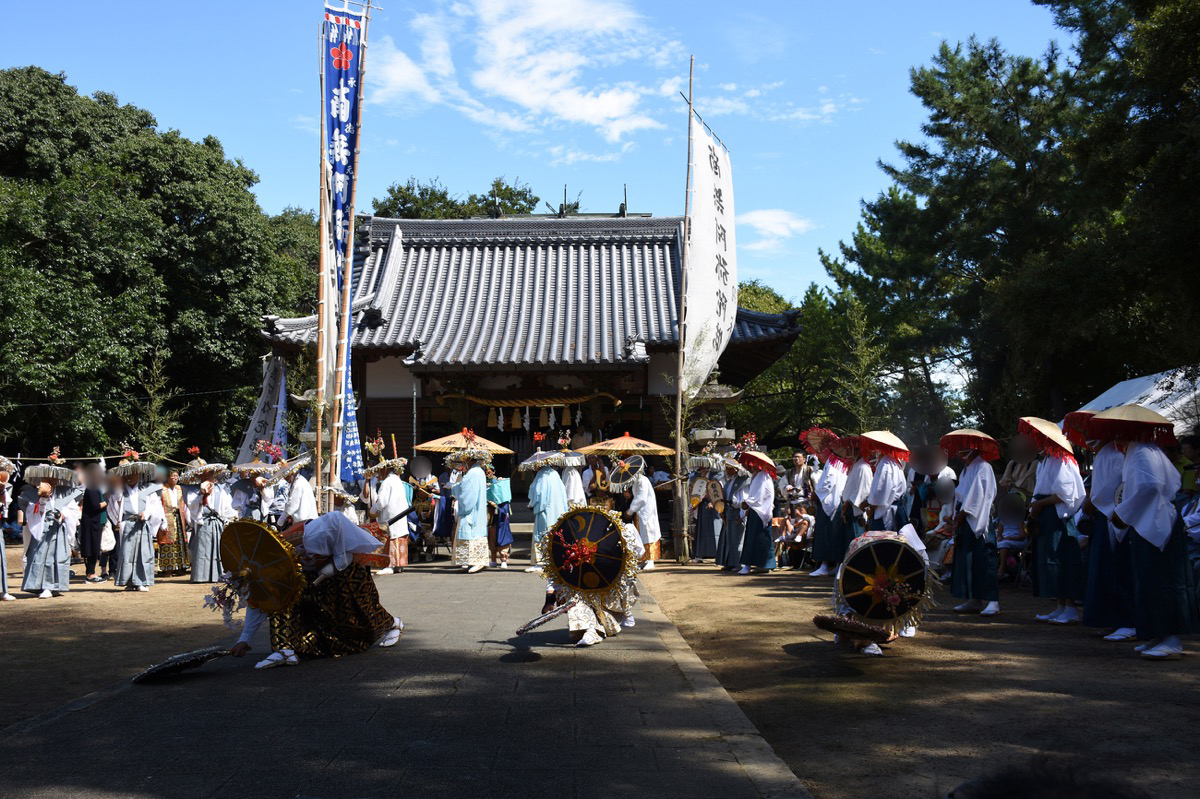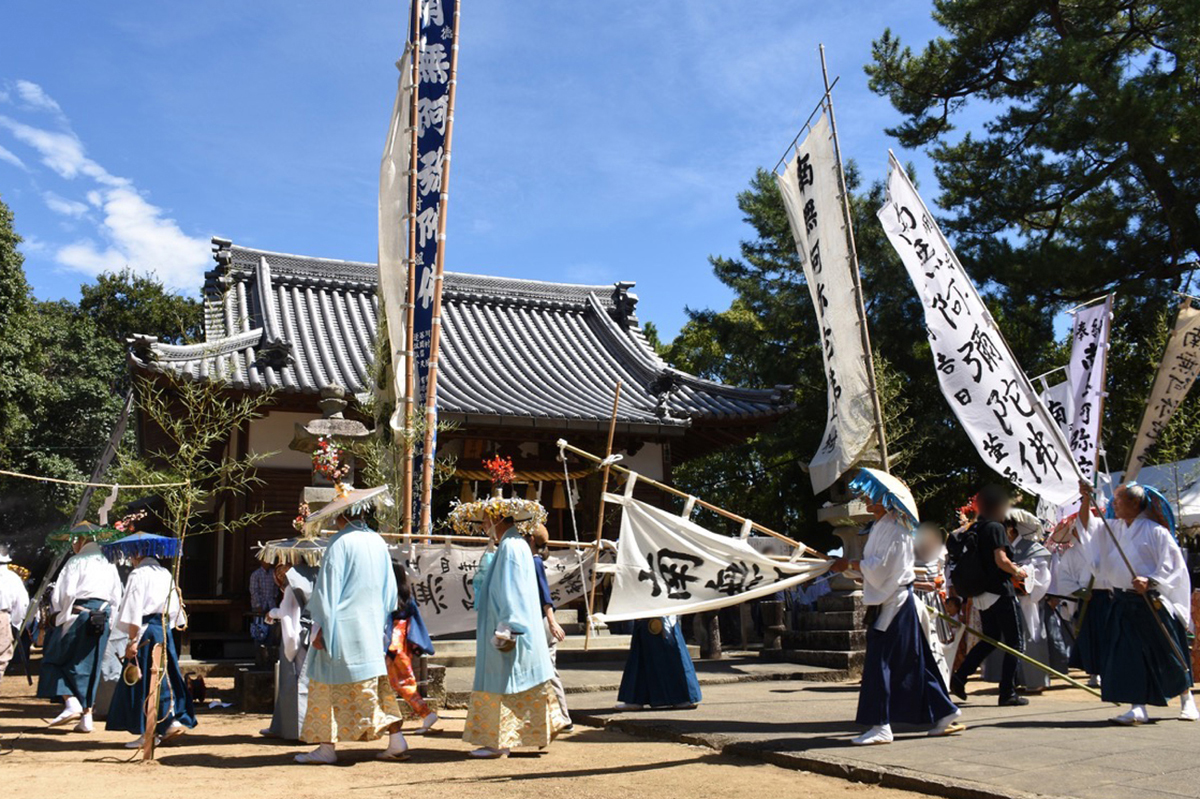Takinomiya no Nenbutsu OdoriTakinomiya Nenbutsu Odori Dance
| District | Folk Cultural Properties | Period | ー |
|---|---|---|---|
| Set Content/Set Date | Important Intangible Folk Cultural Property・西暦1977.05.17 | ||
| Owner | Association for the Preservation of Takinomiya Nenbutsu Odori | Location | Ayagawacho, Ayautagun, Kagawa |
Performed at Takinomiyajinja Shrine and Takinomiya Tenmangu Shrine, the Takinomiya Nenbutsu Odori is a dance of gratitude to honor Sugawara no Michizane and pray for abundant harvest. In times of drought, it is used as a ritual rain dance. It is believed to have originated during the Heian Period when, after the death of Sugawara no Michizane, who saved Sanuki from a severe drought, the people prayed for his happiness in the next world by pounding on gongs and drums.
Prior to the dance is a procession of yakko (servants), followed by people bearing staffs, umbrellas, halberds, and conches, and together with the dance troupe they form a procession and enter the shrine. The dance troupe consists of eleven groups, one from each village, with three of them taking turns to dance each year. Every five years, after each group has performed, all groups come together and dance.
For the dance, bamboo is arranged in a circle on the shrine grounds then tied together with a rope decorated with paper streamers (gohei). Within this circle are dancers called genji holding large fans with pictures of the sun and the moon. The musicians play mainly inner gongs (nakagane) and taiko drums, while surrounded by the accompanying music of wish-fulfilling outer gongs (ganjonari), flutes, and conches. While the dance differs slightly depending on the group, the dances are dynamic and incorporate a diverse range of movements. The dance starts with the genji swinging their large fans diagonally, then jumping while making an arc and folding their legs. In the second half of the dance the genji and inner gong or taiko drummers swap formation.

